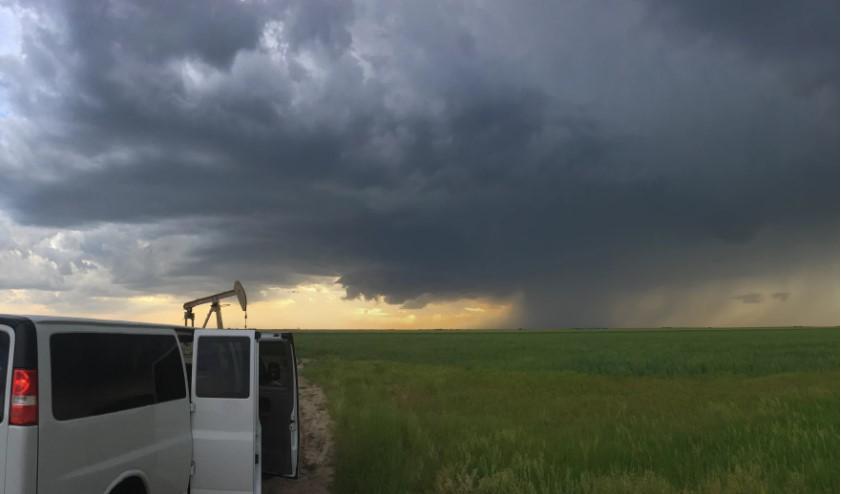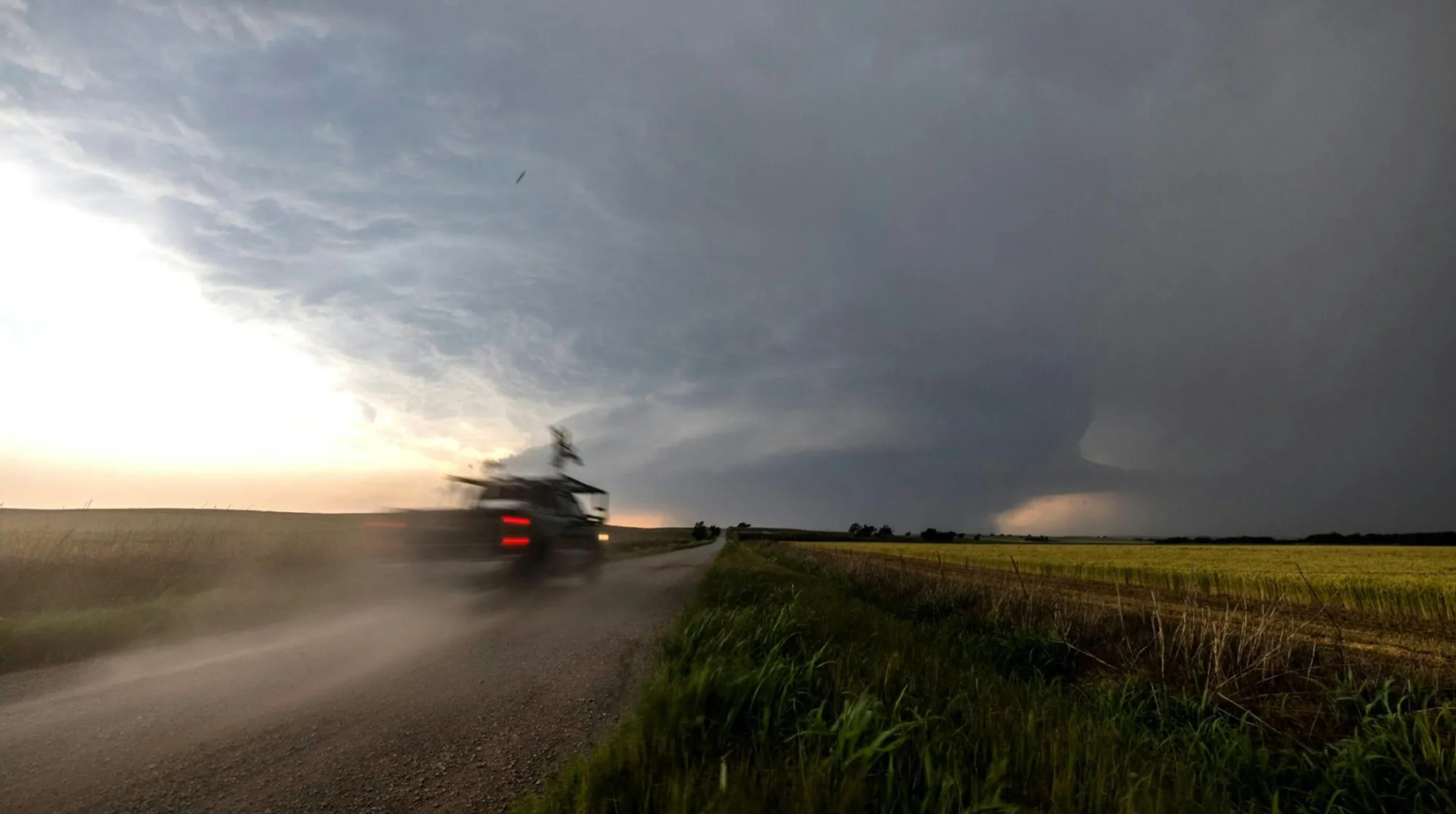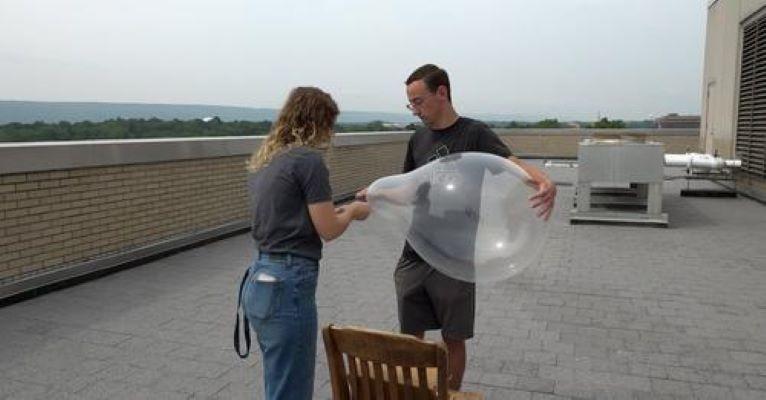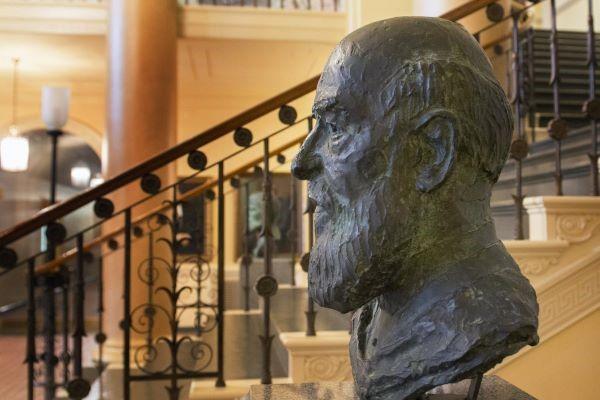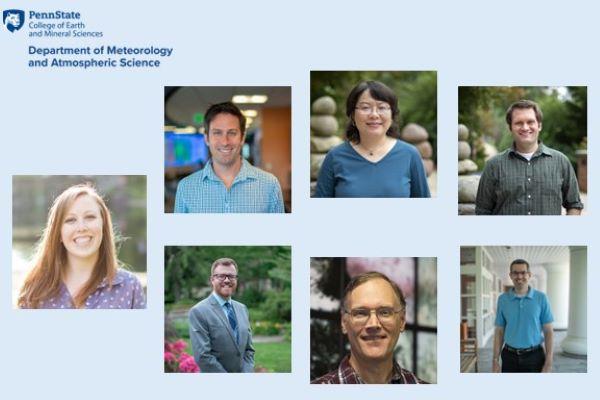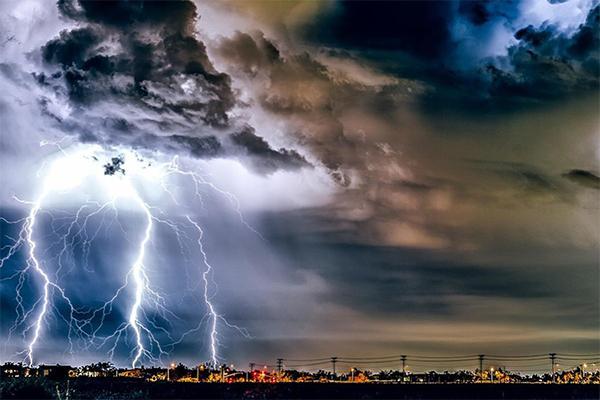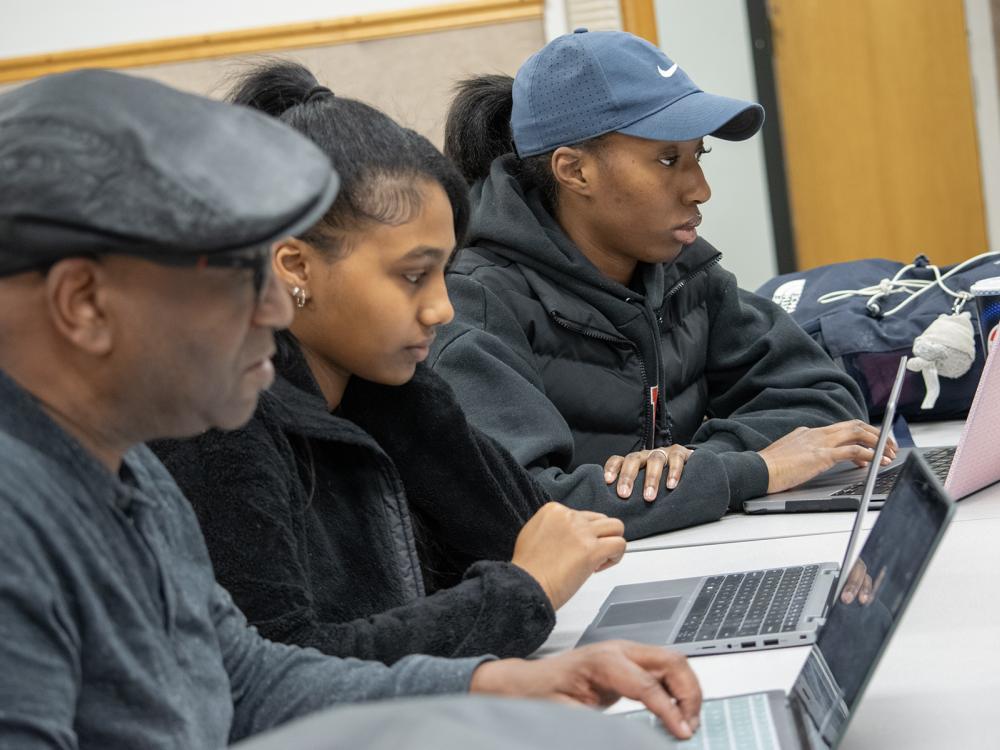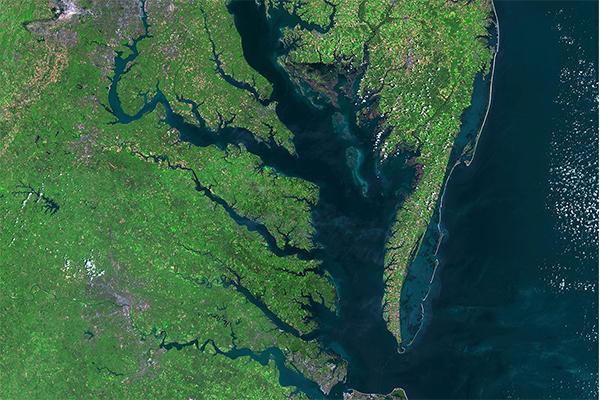News articles are listed below events.
UPCOMING EVENTS
- toOral Comprehensive ExamAdvancing Our Ability to Model the Surface-Atmosphere Interactions in Urban Environments: Model Development Informed Through Observations and High-Resolution Simulations
- toMeteorology ColloquiumTBA
- toHussey Commemorative Lectureship in MeteorologyTBA
- toQualifying ExamAssessing WRF Model Performance in Simulating Wintertime Bay Breeze Dynamics Over Baltimore
- toMeteorology ColloquiumTBA
PAST EVENTS
- toKen Reeves Memorial Weather BriefingAssistant Chief Broadcast Meteorologist, AccuWeather
- toMeteorology ColloquiumResolving Aerosole-Complexity: How Particle-Resolved Modeling Improves Aerosole-Climate Understanding
- toKen Reeves Memorial Weather BriefingResearcher, Penn State University
- toMS Thesis DefenseProjecting Future Changes in Extratropical Transition of Atlantic Hurricanes in Earth System Models
- toMeteorology ColloquiumIntra-Urban Heat Variability in Baltimore City
- toKen Reeves Memorial Weather BriefingWarning Coordination Meteorologist, NWS State College
- toMeteorology ColloquiumSpring Break - No Colloquium
- toQualifying ExamAn Investigation of Subsiding Shells in Simulations of Tropical Thunderstorms
- toMeteorology ColloquiumThe Weather of the Gettysburg Campaign
- toKen Reeves Memorial Weather BriefingAssistant Teaching Professor, Penn State
- toMeteorology ColloquiumCoastal Tropical Cyclone Activity Under Climate Change
- toQualifying ExamA Hybrid Theory for the Dimensional Growth and Hollowing of Ice Crystals
- toMeteorology ColloquiumThe MONAN Program: Developing the Next Generation of Climate and Weather Forecasts for South America
- toPhD Thesis DefenseLand and Ocean Contributions to United States Summertime Precipitation
- toPhD Thesis DefenseEvaluation of Urban Atmospheric Boundary Layer Simulations with Ground-Based Doppler Lidar
- toKen Reeves Memorial Weather BriefingAssociate Professor, Penn State
- toMeteorology ColloquiumThe JCSDA Community Radiative Transfer Model (CRTM)
- toKen Reeves Memorial Weather BriefingGraduate Student, Penn State
- toMeteorology ColloquiumThe Tornado Outbreak of May 31, 1985: Looking Back at One of Pennsylvania's Deadliest Weather Events
- toKen Reeves Memorial Weather BriefingLead Meteorologist, NWS State College
- toMeteorology ColloquiumCan AI Weather Models Predict Out-of-Distribution Gray Swan Tropical Cyclones?
- toMeteorology ColloquiumThe Legacy of Dr. Warren M. Washington, the Climate Crisis, and the Changes in Late 21st Century Saharan Dust in North Africa
- toSpecial EventHilton New Orleans Riverside
- toPhD Thesis DefenseAssimilating NASA Impacts Data for 7 February 2020 Storm to Improve WRF Winter Cyclone Prediction
- toOral Comprehensive ExamEvaluating and Expanding Statistical-Dynamical Downscaling Methods to Improve Landfalling Tropical Cyclone Risk Assessment
- toOral Comprehensive ExamQuatifying Electrical Discharges and Their Impacts
- toMeteorology ColloquiumU.S. Offshore Wind Metocean Conditions Characterization
- toOral Comprehensive Exam"Application of Advancements in Observation of the Planetary Boundary Layer Using Dual-Polarization Radars"
- toOral Comprehensive ExamApplication and Analysis of a Novel Ice Crystal Trajectory Growth (ICTG) Model to a Tropical Cyclone Eyewall
- toMeteorology ColloquiumImproving Mesoscale Forecasts of Winter Precipitation: Results from Stochastic Physics Experiments and Field Campaign Observations
- toOral Comprehensive ExamImproving the Understanding of Snow Particles in the Eyewall and Rainbands of Hurricane Dorian Using Microwave Ice Scattering Databases for Various Microphysics Schemes
- toOral Comprehensive ExamAssessing Urban Greening and Albedo Modification as Strategies to Mitigate Heat-Related deaths in Baltimore, Maryland
- toMS Thesis DefenseRelating Polarimetric Radar Measurements to Quasi-Linear Convective System Cold Pool Properties and Damage Potential
- toOral Comprehensive ExamAdvancing Methods for Source-Specific Quantification of Carbon Dioxide Fluxes in Urban Settings
- toMeteorology ColloquiumTop-Down and Bottom-Up Development of Climate Models
- toPhD Thesis DefenseAssessing the Role of Parameterized Turbulence on Tropical Cyclones and the Mean Climate in the Community Earth System Model
- toKen Reeves Memorial Weather BriefingPhD Student, Penn State Meteorology
- toMeteorology ColloquiumIntegration of Vantage Points, Programs, and Approaches for Space-Based Earth Remote Sensing
- toKen Reeves Memorial Weather BriefingThere will be no briefing on Monday, November 11th
- toMeteorology ColloquiumIce Crystal Growth at Cirrus Temperatures: Measurements and New Theories
- toKen Reeves Memorial Weather BriefingPresident, Campus Weather Service
- Meteorology ColloquiumAerosols and Their Influence on Clouds
- toKen Reeves Memorial Weather BriefingHydrologist/Hydrometeorologist
- toKen Reeves Memorial Weather BriefingLecturer, Penn State Meteorology
- toSpecial EventSharing Scientists' Stories: A Conversation with Meteorologist Biographers
- toMeteorology ColloquiumWeather and Climate Simulation with State-of-the-Art Physics-Informed AI Algorithms
- toKen Reeves Memorial Weather BriefingResearcher, Penn State Meteorology
- toMeteorology ColloquiumTropical Cyclones: Climate Change, ENSO and the Tropical Pacific
- toKen Reeves Memorial Weather BriefingLead Meteorologist
- toOral Comprehensive ExamInvestigating the Dimensionless Parameters Controlling Horizontal Convective Roll Aspect Ratios Over Land
- toMeteorology ColloquiumDevelopments in Quantifying Uncertainty from Bayesian Convolutional Neural Networks as Applied to Synthetic Passive Microwave Retrievals
- toQualifying ExamThe Scale Dependent Practical Estimates of Convection Velocity in Turbulent Canopy Flows
- toMeteorology ColloquiumAerosols and Droplets: Fundamental Particles in our Evolving World
- toThesis DefenseInvestigating the Characteristics and Dynamics of Convective Updrafts in Tropical Cyclone Rainbands
- toKen Reeves Memorial Weather BriefingAssistant Teaching Professor
- toTarbell Lecture in MeteorologyThe Earth System and its Many Scales: A View from Biosphere up to Atmosphere and Back Down Again
- toKen Reeves Memorial Weather BriefingM.S. Graduate Student, Penn State Meteorology
- toMeteorology ColloquiumHuman Influence on the Large-Scale Atmospheric Flow in Recent Decades
- toKen Reeves Memorial Weather BriefingAssistant Teaching Professor, Exec. Producer of Weather World
- toMeteorology ColloquiumHuman Footprints in the Sky: Exploring the Impact of Land Use on the Boundary Layer and Beyond
- toOral Comprehensive ExamImproving Surface Flux and Boundary Layer Modeling with Land Surface Remote Sensing for State Air Quality Planning
- toOral Comprehensive Exam"Leveraging Rossby wave breaking to understand mechanisms generating extreme weather in past and future climates"
- toOral Comprehensive Exam"Examining Recent Surface Temperature Trends"
- toOral Comprehensive Exam"Assessing climate model applications at multiple spatial scales"
- toThesis Defense"Laboratory Measurements of Small Ice Crystal Growth Rates at Low Temperatures"
- toOral Comprehensive Exam"Improving a Diabatic Lagrangian Analysis Technique with Observations from Balloon-borne Sondes to Explore the Relationship Between Supercell Thermodynamics and Baroclinically Generated Circulation"
- toMeteorology Colloquium"Weather Warning Outreach and Communication in the 21st Century"
- toSpecial Event6-8 pm via Zoom
- toOral Comprehensive Exam"Convection Initiation over Coastal Regions: Supporting Environment and Physical Causes over Coastal Texas"
- toMeteorology Colloquium"What Sets the Latitudinal Precipitation Distribution?"
- toSpecial EventVirtual Career Day - Spring 2022 (March 22, 6-8 PM, via Zoom)
NEWS
As the movie "Twisters" enjoys a whirlwind of success at the box office, two Penn State meteorologists and storm chasers talk about the science in the movie and their own experience in the field.
A short article written by Drs. Yvette Richardson and Paul Markowski for The Conversation discusses what scientific storm chasing is really all about.
It’s a chance for students to see what they’re learning in classrooms and textbooks taking place before their eyes and in the skies.
A group of Penn State researchers, led by Dr. David Stensrud, have been able to learn more about an important layer of the atmosphere by using readily-available data from radars.
The Big Ten Academic Alliance's (BTAA) Department Executive Officers (DEO) program has gained five additional fellows from the Penn State ranks; among them is Distinguished Professor and head of the Department of Meteorology and Atmospheric Science, Paul Markowski. The BTAA is the academic consortium of the Big Ten universities and the United States’ preeminent model for effective collaboration among research universities.
Liu is an integrated undergraduate-graduate student who is pursuing both a bachelor of landscape architecture and a bachelor of science in meteorology and atmospheric science. This is the highest award for landscape architecture students.
Join us in congratulating our faculty on their promotions! Melissa Gervais - Associate Professor, Matt Kumjian - Professor, Ying Pan - Associate Professor, Colin Zarzycki - Associate Professor, Rob Lydick - Assistant Teaching Professor, Art Person - Associate Research Professor, and Steve Seman - Associate Teaching Professor
Researchers at Penn State are part of a multi-university team selected to receive $6.6 million in recommended funding from the National Oceanic and Atmospheric Administration (NOAA). The group will establish a new multi-university data assimilation consortium to improve weather forecasts using enhanced numerical weather prediction systems.
Mane Khachatryan, a second-year biology major at Penn State Harrisburg, said she didn’t really get to delve into science until she came to college. So when she heard about EnvironMentors — a program that helps expose high school students to STEM — she jumped at the chance to help younger students explore the field. “I wish I had opportunities like this in high school,” she said.
Penn State researchers were recently awarded funding from the U.S. National Science Foundation to develop a new coupled watershed-estuary model that simulates the transport and fate of major salt ions.


